
The Contemporaries Series
Trevor Wilkinson [1923-2009] & TVR: A charismatic marque which has survived?
Introduction
The Contemporaries Series has been written to achieve the following objectives: –
- To compare and contrast the designs, products and achievements of Colin Chapman/Lotus with their, rivals, contemporaries, peers and competitors
- To benchmark achievement by a series of consistent criteria
- To extract from the comparisons an objective assessment
- To counterpoise some specific models against each other
- To examine the nature, culture and economic viability of the British specialist sports car market.
The British specialist car market has been extremely vulnerable to economic downturn and its history is littered with casualties .Those that have survived are worthy of examination.
Please note the editors have striven to achieve objectivity and consistency of comparison throughout however it will be appreciated with many conflicting sources, references and specifications this is not an easy task and some inaccuracies may occur. We are happy to correct these presented with reliable alternatives,
This piece was intended to provide a thorough comparison like others in our series. During preparation priorities changed and background reading regarding the British specialist car industry and this seemed to offer a prism to explore both Lotus, TVR and the future of this important sector.
This article is therefore essentially:-
- An outline of Trevor Wilkinson his brand and a brief comparison with Lotus
- The Learning Opportunities provides a prompting to explore, and project the future of the British Specialist car market
Subscribers might like to see the directly relevant and integrated A&R pieces that complement and help structure this article:-
- Morgan
- Marcos
- Ford and Austin Specials
- Price Relatively
- Chevron
Commonality
A comparison between Trevor Wilkinson and Colin Chapman is revealing as they shared some basic similarities but Chapman pushed through to a professionalism and international renown whereas Trevor Wilkinson withdrew as Lotus matured.
Both marques/ owners shared these in common: –
- Both had modest parental background
- Both started after the Second World war in humble premises
- Wilkinson and Chapman were practical
- They adopted the kit car concept and used proprietary engines
- Their cars were distinctive
- Both exported to America quite early on in their life
- Both experienced financial problems
- Both could drive at greatly varying degrees , Wilkinson mainly entering hill climbs
- Both used a form of light tubular frame
- Both had significant cars that garnered a disproportionate reputation in TVR case the Griffith
- Both possibly made engineering inventions or patents
- Both men had ambition as entrepreneurs to create their own marque at opposed positions in market place
- Oliver Winterbottom designed for both marques and the aesthetic overlap is evident
Trevor Wilkinson
- A peer of Colin Chapman, he was born in 1923
- Became an apprentice in 1937 at age of 14
- By 1946 he had established Trevcar Engineering in Blackpool
- He was minor inventor with arcade games amongst others to his credit
- Built a AlvisSpecial
- 1949 constructed a cigar/ torpedo bodied sports car along general lines of the Mk VI*
- Progressed to chassis with RGS body shell
- Followed by cars with 2 Microplas bonnets back & front
- A TVR was displayed at the 1958 New York Motor Show
- TVR were sometimes launched at the Racing car Show
- TVR’s were exported to America and The Griffith was fitted with Ford V8
- TVR suffered considerable financial and production issues through 1960’s and soon after Trevor left
*this car is interesting in that it appears to have a space frame chassis? Whereas Buckler used quite substantial tube, magazine pictures of this open two seater seems to have smaller diameter?
TVR Personalities
- Bernard Williams
- Henry Moulds
- Bunty Scott-Moncrieff
- David Hoskins
- Jack Griffiths
- Martin Lilley
- Oliver Winterbottom
- Peter Wheeler
- Les Edgar
- Nikolai Smolensk
- John Turner
- Trevor Fiore
- Jack Pritchard
- Ray Saidel

Figure 1. Editors sketch working drawing of the early TVR

Figure 2. Editor’s photographs
TVR Grantura MkII [MGA] and Mk.III [MGB]

Figure 3. As above
Haynes commented:
The GT body encloses two bucket seats, separated by the propeller shaft tunnel, which makes a very convenient arm rest for the passenger, there is ample leg room, though early models ha not enough head room for a taller driver, and the driving position is comfortable. Visibility is good over the sloping bonne and to the rear due in no small part to the wide windscreen and thin windscreen pillars. The doors are lockable ……….
The cockpit layout is good with matching speedometer and tachometer set side by side on either side of the steering wheel column ……….
High speed driving with the wind up windows down produces very little noise by comparison with some other sports cars .for town driving an electric fan can be fitted ,which is controlled from the dashboard and is very effective
For night driving the lights are good and because of their low height are effective in fog. Luggage space is restricted ………….
Fuel consumption is excellent aided in no small measure by the cars good aerodynamic shape ……
The TVR is a very practical sports car that combines good looks, with above average performance and all the amenities associated with a saloon car .it’s one drawback is perhaps its limited luggage space .although the car uses independent suspension all-round the ride is hard and the steering and controls require a degree of effort for such a light vechicle ………
Weakness in Design and Manufacture
The car is easily written off in an accident …….the space frame is not very well triangulated .the exhaust is a continual problem being far too close to the ground .the mechanical components are proven and reliable , and spares easily obtainable from BMC agents………..
In tuned guise the Mk.III TVR is an ideal dual purpose machine capable of being both driven to a circuit at weekends and raced and providing transportation during the week.
Latest in the TVR line , the Mk.III represents yet another step nearer the ultimate GT perfection , easy to drive ,with well-placed controls , and good relaxed driving position , the TVR is a delight to handle and causes many a wistful glance in any company “
| Grantuara Mk.II [MG-A engine] | Grantuara Mk.III [MG-B engine] | |
| No of Cylinders | 4 | 4 |
| Cubic capacity | 1,588 | 1,798 |
| Bore mm | 74.4 | 80.2 |
| Stroke mm | 88.9 | 89 |
| Valve location | ohv | ohv |
| Maximum BHP | 78 | 98 |
| @ rpm | 5,600 | 5,400 |
| Maximum rpm | 6,000 | 6,000 |
| Compression ratio | 8.3 to 1 | 8.9 to 1 |
| no gears [c/r] | 4 | 4 |
| Brakes | disc/drums | disc/drums |
| Overall length | 11′-9″ | 11′-6″ |
| overall height | 3′-11″ | 4′ |
| overall width | 5′-5″ | 5′-4″ |
| track front | 4′-5″ | 4′-4″ |
| track rear | 4′-5″ | 4′-5″ |
| tyre size | 5.60x 15 | 5.60×15 |
| weight | 14 cwt | 14.5cwt |
| rear axle ratio | 4.1 to 1 | 4.1 to 1 |
| speed x1000 rpm | 17.7 | 17.7 |
| fuel tank capacity | 9galls | 10galls |
| mpg | 28-34 | 25-30 |
TVR Grantura Mk.II [MG-A engine] and Mk.III [MG-B engine]
| TVR Grantura MK.II | TVR Grantura MK.III | ||
| M.G.A engine | M.G.B engine | ||
| Max.Speed | mph | ||
| Fourth | 100 | 107 | |
| Third | 85 | 85 | |
| Second | 65 | 50 | |
| First | 45 | 30 | |
| Max speed x2 runs | 100 | ||
| Acceleration | secs | ||
| 0 to | |||
| 30 | 4.1 | 3.2 | |
| 40 | 5.8 | 4.9 | |
| 50 | 9.1 | 7.2 | |
| 60 | 11.9 | 9.9 | |
| 70 | 17 | 14.1 | |
| 80 | 22.1 | ||
| Fuel consumption | Touring | 34mpg | 30mpg |
| Hard | 28mpg | 25mpg |
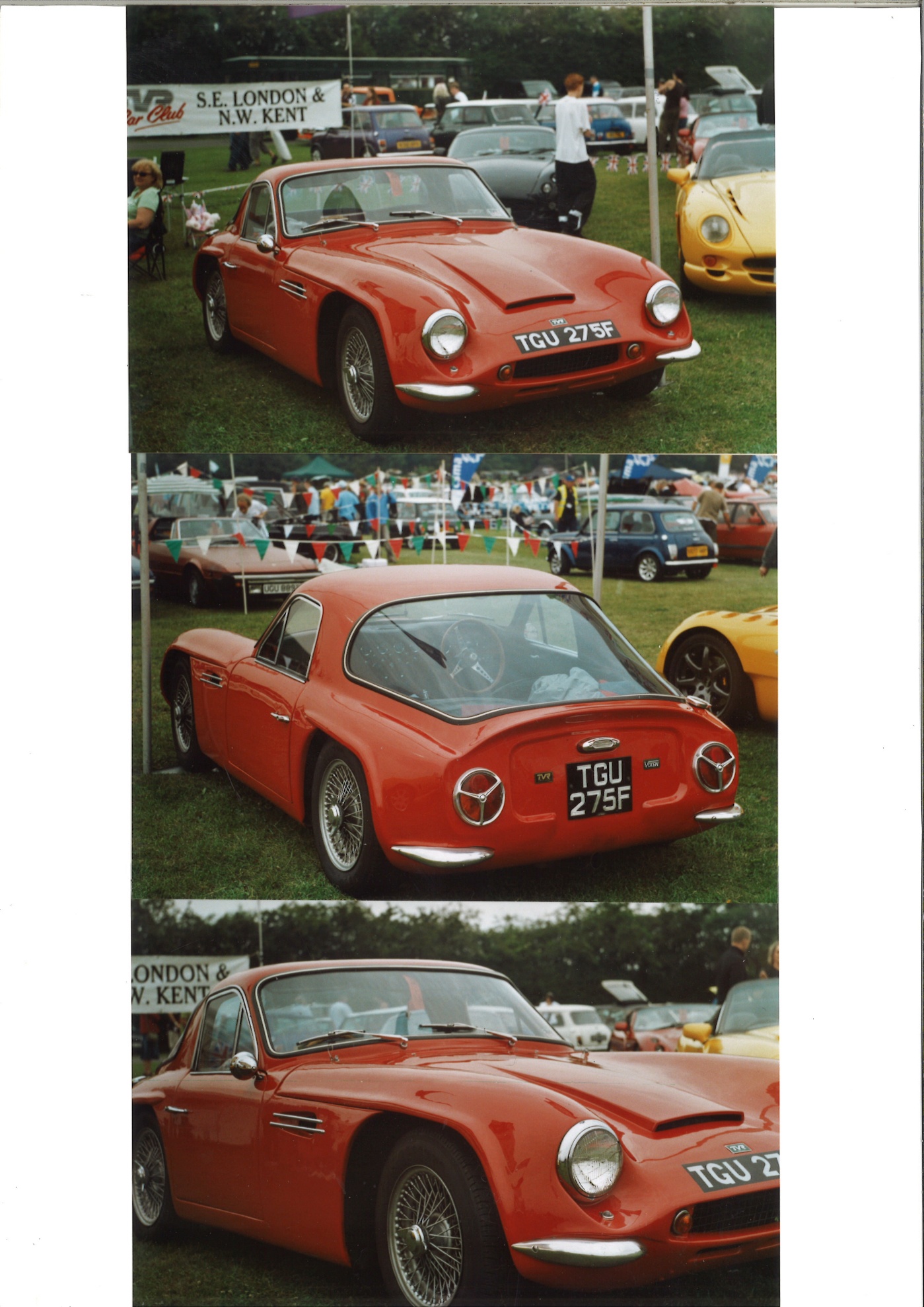
Figure 4. Editor’s photographs noting the continuity of the TVR line

Figure 5. As above
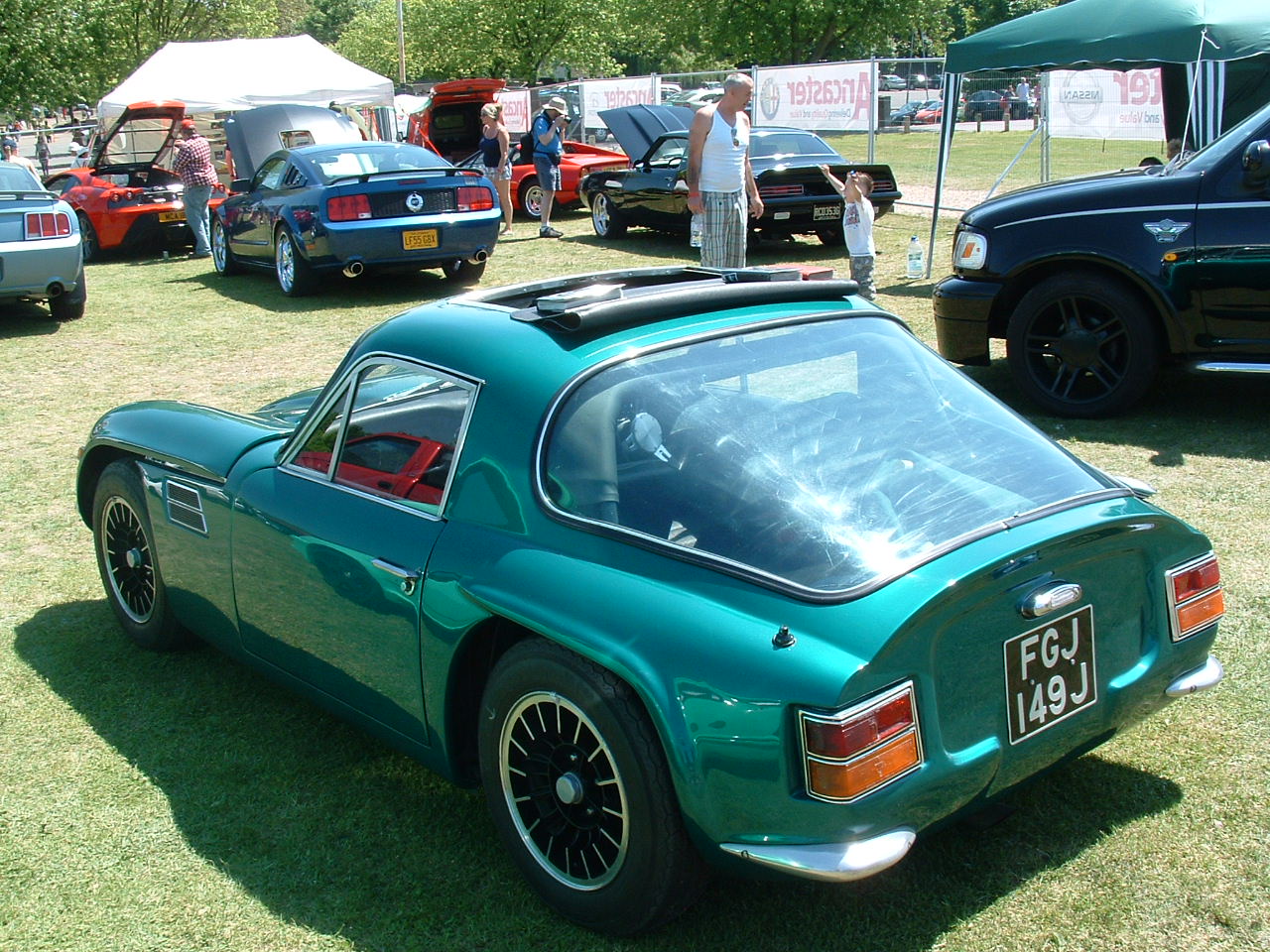
Figure 6. Editors photograph like Lotus, TVR had to source proprietary parts
From the net:-
“The TVR Griffith Series 400 is a 2-door coupe sports car produced by Griffith Motor Company in Plainview, New York ( a Ford Dealer in Plainview/Hicksville NY, Long Island ), between 1964 and 1967. It is the successor to the TVR Griffith 200, featuring improved cooling via a larger radiator with twin electric fans, redesigned rear suspension, and a redesigned rear with better visibility and the round taillights sourced from the Ford Cortina Mark I.
The standard engine in the 400 was the more powerful Ford 289 ‘HiPo’ Windsor engine producing 271 hp that was available in the Series 200 as an option. The 400 weighed a few more pounds than the 200 due mostly to the new Salisbury independent differential that gave it a higher gear ratio providing it with a higher top speed.
Grantura Ltd. of England designed the independent suspension for the TVR automobiles which later became the Griffith 200 and 400. The Griffith 400 had then state-of-the-art unequal wishbone suspension on all four corners and the car weighed significantly less than its contemporary, the AC Cobra, making it a very potent racing car.
As the Series 400 cars were being produced in early 1965, the entire east coast of the US was crippled by a prolonged dock strike. This not only caused a disruption in the supply of the series 400 bodies that were being shipped from TVR in Blackpool, UK, it also caused a delay in the shipment of the newer body design of the Series 600. Frank Reisner, whose Intermeccanica body works in Turin, Italy, was building the new steel bodied Griffith, was also unable to have the bodies shipped. Jack Griffith attempted to bring his car to the public by having these bodies airlifted across the Atlantic.
With only 59 copies of the 400 and 10 600s off the assembly line at the Griffith factory in Plainview, Long Island, N.Y, USA, the company was dissolved.
Specifications [edit] Engine capacity: 4,722cc/289 cid V8
- Power: 271 bhp (202 kW; 275 PS)
- Top speed: Approximately 155 mph (249 km/h)
- Transmission: 4-speed manual gearbox, rear-wheel drive”

Figure 7. Editors sketch working drawing of typical TVR Griffith
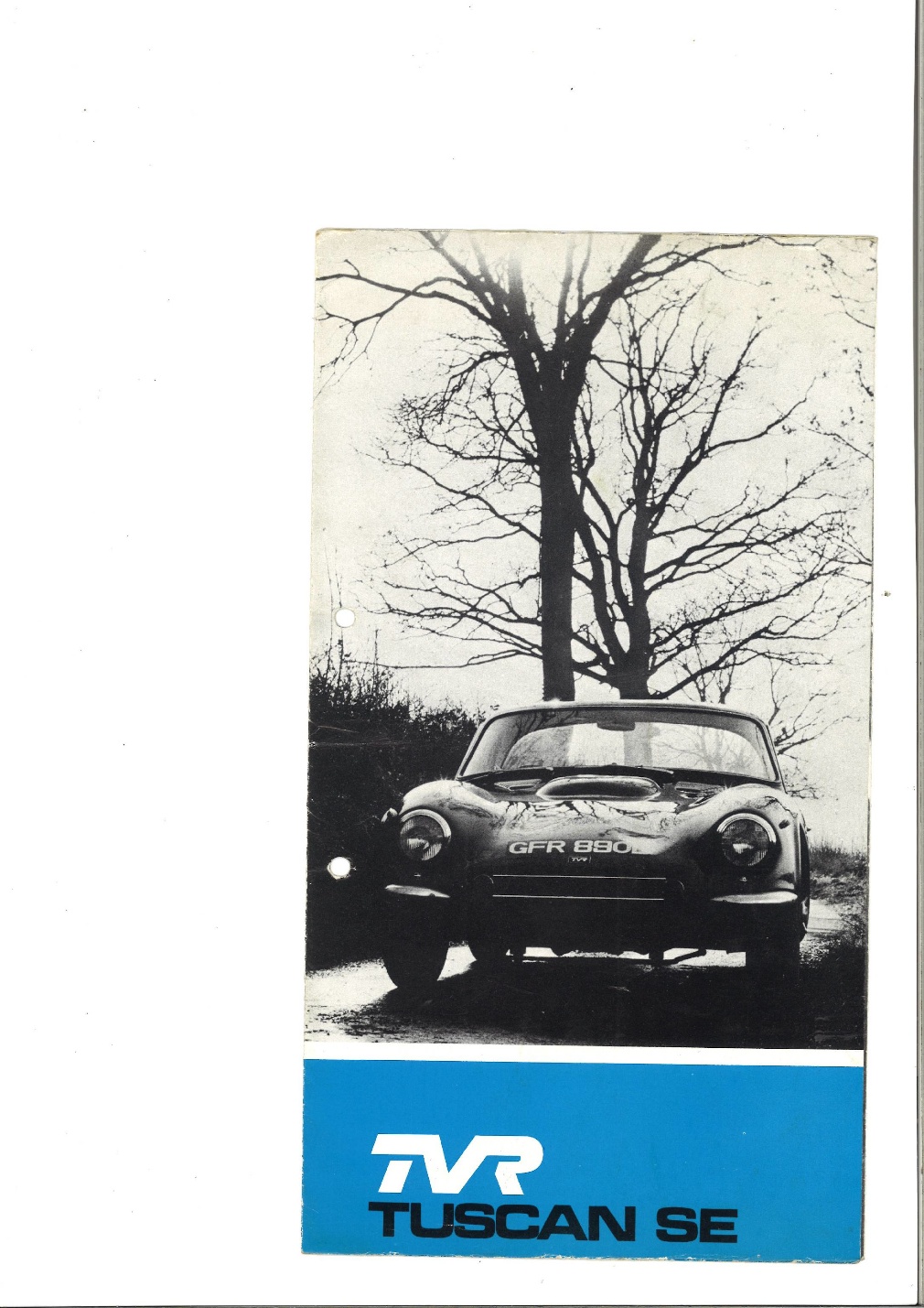
Figure 8.TVR brochure of the Tuscan from A&R library.
| Marque | ||
| Model | Vixen | Tuscan SE |
| Displacement | 1,599 cc | 4,727 cc |
| Maximum HP | 95.5 SAE | 306 SAE |
| Maximum speed | 111mph | 175 mph |
| Wheel base | 86″ | 90″ |
| Front track | 51.5″ | 52.5″ |
| Rear track | 52.5″ | 53.5″ |
| Overall length | 141.5″ | 146″ |
| Kerb weight | 16 cwt. | 19.8 cwt. |
| Body | Coupe, 2 seat, 2 door ,f-glass body | |
| Tyres | 165 x 15 | 185 x 15 |
| Fuel capacity | 15 gals. | |
| Engine | Ford | Ford |
| Cylinders | 4 | V8 |
| Bore /stroke | 81 x 77.6 mm | 101.6 x 72.9 mm |
| Compression ratio | 09:01 | 11:01 |
| Maximum power | 95 bhp @ 5,500 rpm | 306 bhp @ 6,000 rpm |
| Carburettors | Weber | Holley 4 choke |
| Cooling | Water cooled | Water cooled |
| Valves | Push rod | Push rod |
| Transmission | Rear wheel drive | |
| Clutch /Gearbox | Diaphram clutch , 4 speed | |
| Chassis | Tubular | |
| Suspension front | Independent rectangular wishbones, coil springs tele ‘shocks | |
| Rear suspension | Independent rectangular wisbones,ARBar coil springs tele ‘shocks | |
| Steering | Rack & pinion | |
| Brakes | Disc front/ drums rear | |
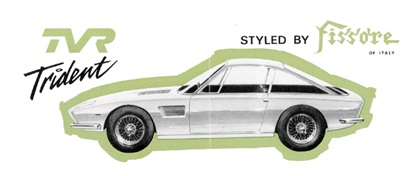
Figure 9.Sales brochure taken from net
TVR aesthetic
- Cut and shut sliced of Manx, Kamm tail, spoiler/lip
- Squat & stubby –almost as wide as long
- Wheel arches & strakes
- Wire wheels
- Cortina rear light cluster
- Vast rear window
- Vents & bonnet bulges
- Grill opening and nostrils
- Stance/presence
Filby:-
“Although short squat and stumpy, the Mk.I’s were attractive from some angles, the shape had never been styled, it had just grown out of convenience and necessity”
Weights
Weight is a particular good measure of assessing fuel efficiency. Unfortunately we don’t have comparable cd information for both marques to make reliable and consistent comparisons.
The respective weights provide interesting comparisons; particularly when the same engine / gearbox and rear axle might have been used in both marques.
| Year | Marque | Model | Weight | lbs./ cwt | |
| 1948 | Lotus | Trials Car | 1092 | lbs. | |
| 1951 | Lotus | Mk.III | 815 | lbs. | |
| 1952 | Lotus | Mk.VI | 952 | lbs. | |
| 1957 | Lotus | Seven | 924-980 | ||
| 1968 | Lotus | Seven | 1210-1258 | ||
| 1954 | Lotus | Mk.VIII | 1148 | ||
| 1956 | Lotus | Eleven | 1019 | ||
| 1957 | Lotus | Elite | 1484 | ||
| 1962 | Lotus | Type 23 | 884 | ||
| 1962 | Lotus | Elan | 1210-1250 | ||
| 1962 | Lotus | Cortina | 1822 | ||
| 1966 | Lotus | Europa | 1350- | ||
| 1967 | Lotus | Elan +2 | 1180-1970 | ||
| 1969 | Lotus | Seven S iV | 1276-1310 | ||
| 1974 | Lotus | Elite | 2240-2550 | ||
| 1975 | Lotus | Elcat | 2450 | ||
| 1976 | Lotus | Esprit | 2218 | ||
| 1982 | Lotus | Excel | 2507 | ||
| 1989 | Lotus | Elan | 2198 | ||
| 1989 | Lotus | Carlton | 3641 | ||
| 1996 | Lotus | Elise | 1518 | ||
Lotus & TVR Compared and Contrasted
This is not the easiest of exercises.
Although there might be a slight comparison between the TVR of the 1960’s and the Elan.
Cars might be compared on performance but time has prevented the editors compiling these.
TVR not compete at the same levels as Lotus so benchmarking is not possible here either.
The more recent TVR are obviously very different creatures to the Lotus.

Figure 10. Editors photograph of a TVR competing at a wet hill climb in West Wales
Product Prices
| c1952 | Lotus | Mk.VI | £400-500 | Estimated / specification | |
| Lotus | Eleven | £872 | £1308 inc pt | Ford 1172 sv | |
| Lotus | Eleven S2 | £1690 | pt£811 | Le Mans | |
| Lotus | Eleven S2 | £1490 | Nett | Club | |
| 1959/60 | Lotus | Seven S 1 | £892 | Eng’£356 | Chassis£499 |
| 1959 | Lotus | Seven S 1 | £1036 | “F” | |
| 1959 | Lotus | Seven S 1 | £1546 | “C” | |
| 1959 | Lotus | Seven S 1 | £536 | Kit form | Eng’options |
| 1960 | Lotus | Seven S 2 | £587 | Kit form | |
| 1961 | Lotus | Seven S 2 | £499 | Kit form | |
| 1962 | Lotus | Seven S 2 | £868 | ||
| 1962 | Lotus | Super Seven | £681 | pt£350 | inc cr gears |
| 1962 | Lotus | Super Seven | £599 | Kit form | without cr |
| 1965 | Lotus | Super Seven | £645 | Kit form | without extra |
| 1965 | Lotus | Super Seven | £695 | pt£173 | |
| c 1968 | Lotus | Seven S 3 | £775 | Kit form | |
| c 1968 | Lotus | Seven S 3 | £1250 | Kit form | SS Twin cam |
| 1969 | Lotus | Seven S 3 | £1600 | SS | |
| c1970 | Lotus | Seven S 4 | £895 | Kit form | |
| c1970 | Lotus | Seven S 4 | £1245 | Kit form | Twin cam |
| c1970 | Lotus | Seven S 4 | £1265 | Kit form | Holbay |
| c1973 | Lotus | Seven S IV | £1487 | ||
| 1963 | Lotus | Elite | £1451 | Kit form | Special Equip |
| c 1963 | Lotus | Elite | £1966 | inc-p’tax | |
| 1965 | Lotus | Elan | £1187 | £249 | |
| c1973 | Lotus | Elan Sprint | £2436 | ||
| 1971 | Lotus | Europa | £1595 | Kit form | Twin cam |
| 1971 | Lotus | Europa | £1715 | Twin cam | |
| c1973 | Lotus | Europa Spec | £2436 | ||
| 1983 | Lotus | Esprit S3 | £15380 | ||
| 1997 | Lotus | Elise | £20950 | 1.8i | |
| 2013 | Lotus | Elise | £29050 | 1.6 | |
| 2013 | Lotus | Elise | £37205 | 1.8S | |
| 2013 | Lotus | Evora | £53080 | 3.5 V6 | |
| 2013 | Lotus | Evora | £62290 | 3.5 V6S | |
TVR retail prices
| Year | Model | Kit [£] | Complete[£] | |
| 1952 | Sports Saloon | 650 | ||
| 1952 | Coupe | 1,050 | ||
| 1954 | Sports Saloon | 1450 | ||
| 1958 | Grantura | 660 | Ford 100E | |
| 1960 | Grantura | 880 | 1003 | MG-A |
| 1961 | 1543 | |||
| 1965 | Trident | 1620-1797 | ||
| c1966 | Tuscan | 1967 | cf Jaguar E type | |
| Tuscan V8 SE | 2,364 | |||
| Tuscan V6 | 1492 | 1950 | ||
| Griffith | 2365/2995 | |||
| 1966 | 1800S | 768,800,850 | 1120-1272 | |
| 1969 | Vixen | 1150 | 1930 |
Projected Futures
Very briefly; Lotus looks to have a future despite the extremely different times for the specialist car marques & market. They have planned a museum and visitor center at Hethel. The completion may be subject to an economic improvement.
TVR has suffered a series of setbacks. They are proposing to reestablish in South Wales where they would be close to a proposed new race track. The economy and Britexit might impede this move.
TVR & Gordon Murray
Gordon Murray has designed a new generation of TVR. The car has the code of T37 with a proposed Cosworth Ford V8 engine. The editors have seen a suggested price of £90,000.
The car seems well thought through, viable with a distinctive TVR DNA, and we image Murray might have contributed to the production organisation.
We hope that the car might be built in sufficient volume to guarantee TVR survival.

| SPECIFICATION | MARQUE/MODEL: Marcos GT2 | MARQUE /MODEL: TVR Sagaris | MARQUE/ MODEL : TVR Tuscan Convertible |
| Engine | V8, front-mid | In line 6 -cylinder, front-mid | In line 6 cylinder, front -mid longitudinal |
| Cylinder Block/Head | All alloy ,pushrod, 2 valves per cylinder | All alloy dohc, 4 valves per cylinder | Aluminium alloy, dry sumped. |
| Max.power | 422 bhp @ 5,400 rpm | 406 bhp @ 7500 rpm [ manuf ‘ figures] | 365 bhp @ 6800 rpm [claimed] |
| Max.torque | 470 lb ft. @ 4200 rpm | 349lb ft. @ 5000 rpm [manuf figures] | 315 lb ft. @ 6000 rpm [claimed] |
| Transmission | 6 speed manual rear drive lsd | 5 speed manual , rear drive lds | 5 speed manual, rear wheel drive lsd |
| Weight | 1170 kg | 1079 kg | 1100 kg |
| Power to weight | 367 bhp /ton | 383 bhp/ton | 337 bhp per ton [manuf’ figures] |
| 0-60 mph | 4.3 sec | 3.7 sec[claimed] | 3.8 sec [claimed] |
| 0-100 mph | 9.8 sec | N/A | 8.1 sec [claimed] |
| Top speed | 185 mph [claimed] | 186 mph [claimed] | 195 mph [claimed] |
| Basic price | £49,995 | £49,995 | £39,950 [ £45.061 as tested] |
| Location | Front -mid longitudinal | ||
| Displacement | 5,665 cc | 3,996 cc | 3996 cc |
| Cylinder head | Alum alloy head dohc 4v per cyl | ||
| Fuel & ignition | Electronic engine management, sequential multi-point injec’ | ||
| Front suspension | Double wishbone, coil-over gas dampers ,anti-roll bar | ||
| Rear suspension | Double wishbone, coil-over gas dampers ,anti-roll bar | ||
| Brakes | Vented discs all round ,322 mm front , 298 mm rear | ||
| Wheels | 18 in diameter, aluminium alloy | ||
| Tyres | 255/35 ZR18 front & rear | ||
| Year | 2005 | 2005 | 2005 |
| EVO rating | **** | ****1/2 | ****1/2 |
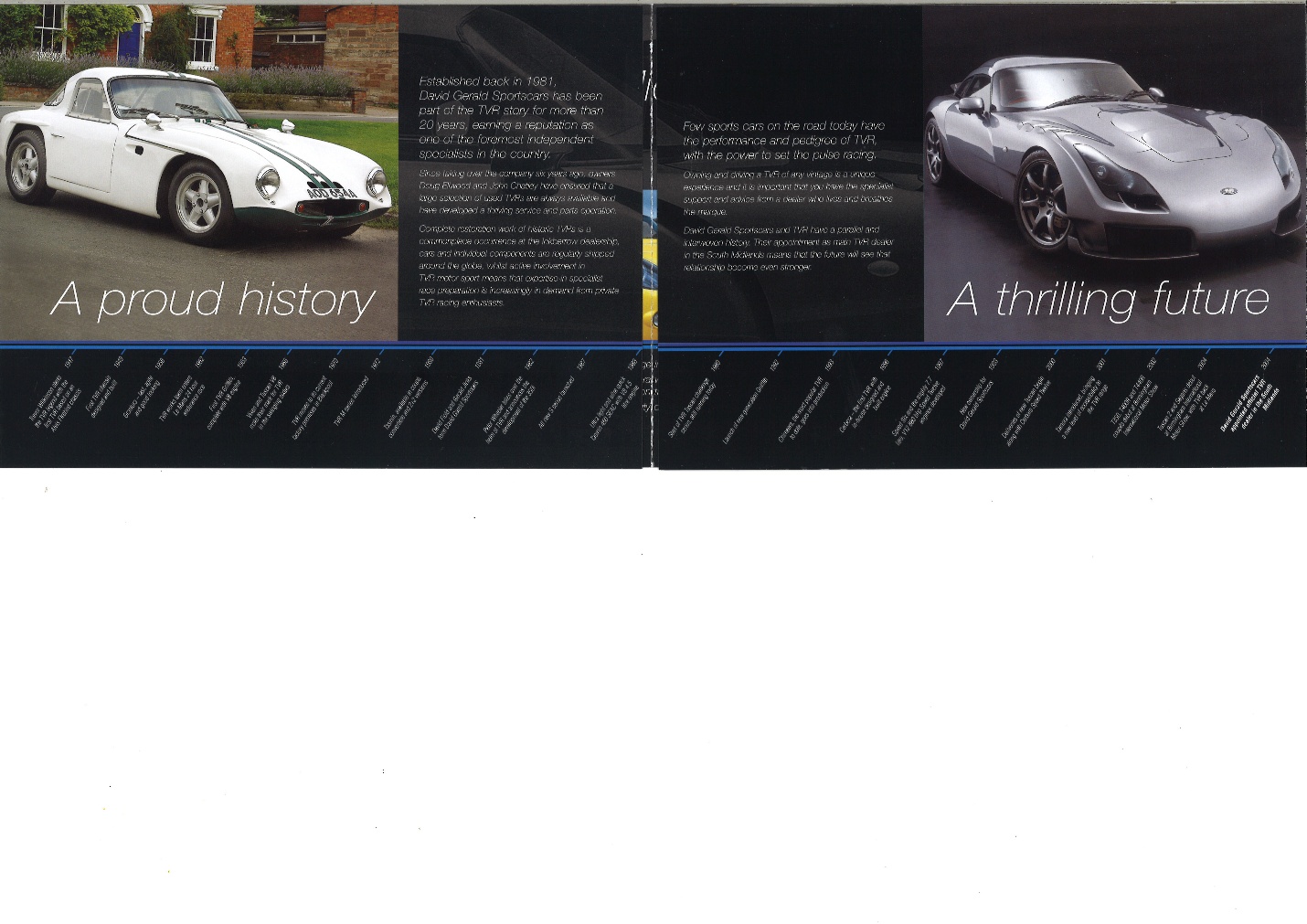
Figure 11.TVR Brochure from David Gerald Sports Cars Ltd.
Learning Opportunities
Our learning /educational opportunities are intended to be challenging thought provoking and requiring additional research and/or analysis.
These opportunities are particularly designed for a museum/education centre location where visitors would be able to enjoy access to all the structured resources available in conjunction with any concurrent exhibition.
In this instance we suggest the following might be appropriate:-
- More recently TVR used their own engines-what was the specification? What were respective advantages Disadvantages?
- Draw up spread sheet to compare and contrast Trevor Wilkinson with Colin Chapman
- What has been the motor racing participation of TVR?
- List European and British specialist car marques that used American V8 engines
- Devise spreadsheet criteria/data to correlate TVR models ,specifications ,retail price and sales
- Where does TVR sit in Britain’s specialist car marques?
- Select five British specialist car marques of the 1950’s what were their products and how did they compete on pricing
- Analyse the economic geography of Blackpool, how significant an employer were TVR [ consider Caterham Cars as reference]
- Access Duke DVD and comment on production techniques
- Using appendix data produce a graph or SWAT ananalyis for British specialist car marques
Exhibitions, Education, Economics and Entertainment
In the museum context the editors believe that commercial considerations are both necessary and complementary with its educational objectives.
For these reasons our suggested outline Business Plan includes provision for promoting products and services which share Chapman’s ideals of mechanical efficiency and sustainability. In addition we propose merchandising that explain and interprets the social and cultural context of Chapman’s designs in period. It’s suggested there will be catalogue for on line purchasing.
In this instance we suggest the following exhibition titles might be appropriate:-
- TVR & Blackpool :Rock & Roll
- TVR & Blackpool : Lighting up
- TVR & Blackpool : Red lights& red lines
- TVR & Blackpool :Towering Achievement
- TVR & Blackpool :Towering Inferno
- TVR & Blackpool :Last Tango
Conclusion
- Its worth reviewing Chapman and Wilkinson in the overall context of the British specialist car market. With hybrid, electric and cost effective supercars from mainstream manufacturers to project futures
- Lotus and TVR were products of the post war era and went through similar fluctuations of the economy and demand
- TVR has competed in club racing and more recently supported a one marque series they have little comparison with Lotus
- Both marques have been near collapse but have reinvented themselves
- Of those specialist brands listed below Lotus might have a more secure footing and be more adaptive to a seismic change in the world car market
TVR has been a charismatic brand with heritage, the editors hope it might have the luck and ability to reinvent itself again.
It’s worth noting that TVR does not has a museum and visitor center at their premise at the moment although this might change with their relocation to Wales. They do have an active car club. A museum is a significant heritage and marketing device for the largest quality manufacturers willing to invest, promote their brand, its identity and historical reputation.
Using the comparative analysis that the A&R adopts it’s hoped that the merit of Colin Chapman and Lotus are seen as equally worthy of a museum. As such the investment is intended to:-
- Promote Car sales and engineering
- Contribute to national economy through tourism
- Support and integrate with local economy to support enriched tourism within the experience economy
- Contribute to the development and education of engineers and entrepreneurs
- Reduce welfare by increasing education and self-sufficiency and skills
- Promote the wider cultural dimension of design through engineering
The editors are developing a series of comparative articles that will evaluate Lotus against:-
- TVR
- Ginetta
- Gilbern
- Elva
- Chevron
- Bond
- Reliant
- Turner
- Marcos
Please let us know if you would like other marques to be included and any preference in sequence.
Appendix 1: TVR types
Statistics extracted from Wikipedia .Further clarification and checking may be required from sources given in references below.
| Model | Production Years | Engine | Displacement | |
| Trevor Wilkinson Era[20] | ||||
| Jomar1 | 1956–1959 | Coventry Climax | 1098 cc
1172 cc |
|
| TVR Open Sports / Coupe | 1956–1957 | Coventry Climax | 1098 cc
1172 cc 1489 cc |
|
| TVR Grantura I | 1958–1960 | Coventry Climax FWA | 1098 cc
1216 cc 1172 cc 1489 cc |
|
| TVR Grantura II | 1960–1961 | Coventry Climax FWE | 1216 cc
997 cc 1489 cc 1588 cc |
|
| TVR Grantura IIa | 1961–1962 | Coventry Climax FWE | 1216 cc
997 cc 1340 cc 1588 cc 1622 cc |
|
| TVR Grantura III | 1962–1963 | BMC B-Series | 1622 cc | |
| TVR Grantura III 1800 | 1963–1965 | BMC B-Series | 1798 cc | |
| TVR Grantura 1800S | 1964–1966 | BMC B-Series | 1798 cc | |
| TVR Trident | 1964–1966 | Ford Windsor V8 | 4727 cc | |
| TVR Griffith 2001 | 1963–1964 | Ford Windsor V8 | 4727 cc | |
| TVR Griffith 4001 | 1964–1967 | Ford Windsor V8 | 4727 cc | |
| Martin Lilley Era | ||||
| TVR Grantura IV 1800S | 1966–1967 | BMC B-Series | 1798 cc | |
| TVR Tuscan V8 | 1967–1970 | Ford Windsor V8 | 4727 cc | |
| TVR Tuscan V6 | 1969–1971 | Ford Essex V6 | 2994 cc | |
| TVR Vixen S1 | 1967–1968 | Ford Kent | 1599 cc
1798 cc |
|
| TVR Vixen S2 | 1968–1969 | Ford Kent | 1599 cc | |
| TVR Vixen S3 | 1970–1972 | Ford Kent | 1599 cc | |
| TVR Vixen 1300 | 1971–1972 | Triumph I4 | 1296 cc | |
| TVR Vixen 2500 | 1971–1972 | Triumph I6 | 2498 cc | |
| TVR Vixen S4 | 1972 | Ford Kent | 1599 cc | |
| TVR 1600M | 1972–1973
1975–1977 |
Ford Kent I4 | 1599 cc | |
| TVR 2500M | 1972–1977 | Triumph I6 | 2498 cc | |
| TVR 3000M | 1971–1979 | Ford Essex V6 | 2994 cc | |
| TVR 3000M Turbo | 1975–1979 | Ford Essex V6 | 2994 cc | |
| TVR Taimar | 1976–1979 | Ford Essex V6 | 2994 cc | |
| TVR Taimar Turbo | 1976–1979 | Ford Essex V6 | 2994 cc | |
| TVR 3000S | 1978–1979 | Ford Essex V6 | 2994 cc | |
| TVR 3000S Turbo | 1978–1979 | Ford Essex V6 | 2994 cc | |
| TVR Tasmin 200 | 1981–1984 | Ford Pinto I4 | 1993 cc | |
| TVR Tasmin 280i | 1980–1984 | Ford Cologne V6 | 2792 cc | |
| Peter Wheeler Era | ||||
| TVR 280i | 1984–1987 | Ford Cologne V6 | 2792 cc | |
| TVR 350i | 1983–1989 | TVR/Rover V8 | 3528 cc | |
| TVR 350SX | 1985–1989 | TVR/Rover V8 | 3528 cc | |
| TVR 400SX | 1989 | TVR/Rover V8 | 3948 cc | |
| TVR 350SE | 1990–1991 | TVR/Rover V8 | 3947 cc | |
| TVR 390SE | 1984–1988 | TVR/Rover V8 | 3905 cc | |
| TVR 400SE | 1988–1991 | TVR/Rover V8 | 3948 cc | |
| TVR 420SE | 1986–1987 | TVR/Rover V8 | 4228 cc | |
| TVR 450SE | 1989–1990 | TVR/Rover V8 | 4441 cc | |
| TVR 420SEAC | 1986–1988 | TVR/Rover V8 | 4228 cc | |
| TVR 450SEAC | 1988–1989 | TVR/Rover V8 | 4441 cc | |
| TVR S | 1986–1988 | Ford Cologne V6 | 2792 cc | |
| TVR S2 | 1989–1990 | Ford Cologne V6 | 2933 cc | |
| TVR S3(C) | 1991–1992 | Ford Cologne V6 | 2933 cc | |
| TVR S4C | 1993–1993 | Ford Cologne V6 | 2933 cc | |
| TVR V8S | 1991–1993 | TVR/Rover V8 | 3948 cc | |
| TVR Griffith | 1992–2002 | TVR/Rover V8 | 3948 cc
4280 cc 4988 cc |
|
| TVR Chimaera | 1992–2001 | TVR/Rover V8 | 3948 cc
4280 cc 4495 cc 4988 cc |
|
| TVR Cerbera | 1996–2003 | AJP8 / Speed Eight | 4185 cc
4475 cc |
|
| 1996–2003 | Speed Six | 3996 cc | ||
| TVR T400 | 2001–2007 | Speed Six | 3996 cc | |
| TVR Tamora | 2002–2006 | Speed Six | 3605 cc | |
| TVR T350 (Targa & Coupe) | 2003–2006 | Speed Six | 3605 cc | |
| TVR Tuscan | 1999–2006 | Speed Six | 3605 cc
3996 cc |
|
| TVR Sagaris | 2004–2006 | Speed Six | 3996 cc | |
| TVR Typhon | 2004 | Speed Six | 3996 cc | |
| Nikolai Smolenski Era | ||||
| TVR Sagaris | 2004–2006 | Speed Six | 3996 cc | |
| Specialty/Racing Cars | ||||
| TVR Cerbera Speed 122/3 | 1997 | Speed Twelve | 7730 cc | |
| TVR Tuscan Speed 122/3 | TVR Speed Twelve | 7730 cc | ||
| TVR Tuscan Challenge3 | 1989–(around 100 made) | Rover V8/Speed Eight | 4500 cc | |
| TVR T400R/Typhon GT3 | ? | |||
Appendix 2. Production volumes to 1980
| Model | Production no [Thoroughbred Classic cars ,August 1995 | ||
| Jomar [all body types] | 21 | ||
| Grantura | Mk’s | I,II,IIA | 105/104 |
| Grantura | Mk’s | IIA,/III | 227/168 |
| Griffith [inc 200& 400 | c310 | ||
| Grantura | Mk’s | 1800S/IV 1800S | 38/78 |
| Vixen | S1,S2,S3,S4 | 117,438,168,23 | |
| Tuscan V8 [1967-70 incl LWB] | 73 | ||
| Tuscan V6 [1969-71] | 101 | ||
| 2500/1300 | 385/15 | ||
| 2500M/1600M/3000 M | 947,148,654 | ||
| Taimar/Convertible | 395/258 | ||
| 3000M Turbo | 20 | ||
| Taimar Turbo/Convertible Turbo | 30/13 | ||
| Tasmin [to end of 1980] | 44 | ||
| Total Production [to 1980] | 4,980 | ||
Appendix 3: British Specialist Marques
| AC |
| Arash |
| Ariel |
| Ascari |
| Bristol |
| Brooke |
| Caparo |
| Caterham |
| Chevron |
| Connaught |
| Farbond |
| Ginetta |
| Grinnall |
| Invicta |
| Lotus |
| Marcos |
| McLaren |
| Melling |
| Morgan |
| Mosler |
| Noble |
| Radical |
| Rocket |
| TVR |
| Ultima |
| Westfield |
Reference:
Websites:
www.Lotus.com
Books
Motor Sports Car Road Tests. Temple Press.1965
The Lotus Book .W.Taylor.Coterie Press.1999.
Motor Sports Car Road Tests second Series. Temple Press.1965
Guide to Used Sports Cars Vol’s I &II .J.H.Haynes.Haynes.c 1965
Lotus –The Legend. David Hodges.Parragon1998.
ISBN: 0752520741
Italics A&R library
Reference:
Specialist Sports Cars.Heseltine.Haynes.2001.
ISBN: 1859606903
Guide to Component Cars.H.Haynes.Haynes.1966
TVR-Success against All Odds. Peter Filby.Wilton House.
ISBN: 0954572912
TVR.Vol.I Robson.MRP.1993
ISBN: 0947981802
TVR the Complete Story.Tipler.Crowood.
ISBN: 1852237961
TVR: An Illustrated History.Tipler.Haynes.
ISBN: 9781944252350
TVR [1959-86 & 1959-88] Gold Portfolio.Brooklands
TVR. 1975-1994 .I.Ayre.Mitchell-Filby
TVR –All the cars. I.Ayre.Haynes 2007.
ISBN: 9781844251001
High Performance Cars.1965-66.Autosport. [TVR Griffith Road Test by John Bolster]
A-Z of Cars of the 1970’s.Robson.Bayview.1990.
ISBN: 1870979117
A-Zof Cars 1945-1970.Sedgwick & Gillies.Bayview.1986.
ISBN: 1870979095
British Sports Cars.Watkins.Batsford.1974
ISBN: 0713404728
European Sports > Cars 1945-1960.Robson.Foulis.1981.
ISBN: 0855292810
Sports cars.Georgano.Nelson.1970.
TVR.DVD.Duke.2003.
*Nb as some of these volumes are expensive/ difficult to obtain research was conducted at the British Library.
Italics the A&R library